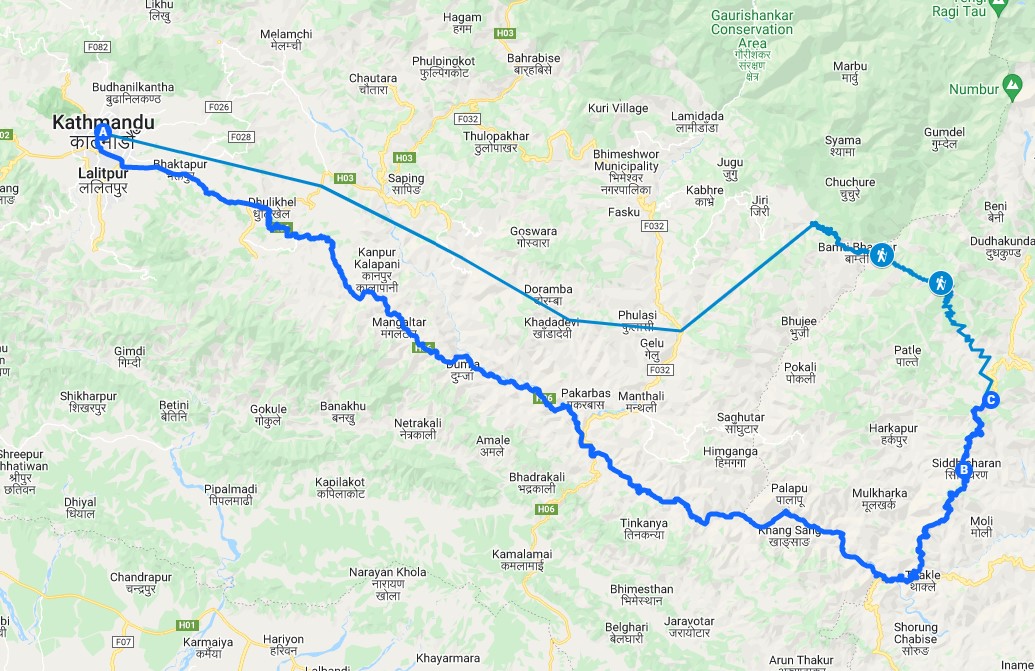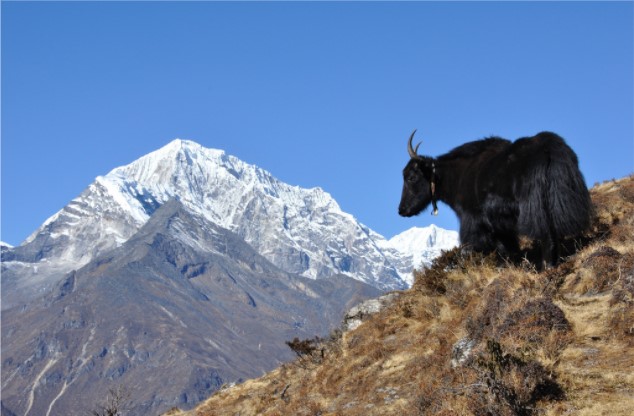
Sir Edmund Hillary claimed that the view of the lower Everest region from Pikey Peak is the best in Nepal, and we think he’s right. This short trek has the advantage of being slightly further away from the big peaks, which means that views from the trail encompass much more of the Himalayas. In just 7 days, you can enjoy the scenery, learn about Sherpa culture, and explore Kathmandu.
Highlights
- See Everest from one of Nepal’s best viewpoints.
- Get a rare, expansive view of a large stretch of the Himalayan range.
- Experience the lower Everest Region, which most travelers miss.
- Complete a trek and experience Sherpa culture in just 7 days.
Overview
The Pikey Peak in Nepal’s Ramechap district is one of the best hilltops for panoramic mountain views, including Mount Everest and others. Pikey Peak is a seasonal snowy hill where local Sherpas go for short hikes and hang the prayer flag.
Want to know more?
| Viber / WhatsApp | 9864014537 |
| Kathmandu office | 01-4439962, 01-4439963 |
| Price |
Trip Itinerary Brief
| Day | Highlights | Overnight |
| Day 1 | Welcome to Kathmandu! | Kathmandu |
| Day 2 | Drive from Kathmandu to Dhap, Trek to Sigane or Japre | Japre |
| Day 3 | Trek from Japre to Pikey Base Camp | Pikey Base Camp |
| Day 4 | Trek from Pikey Peak Base Camp to Chaulakharka via Pikey Peak | Chaulakharka |
| Day 5 | Trek from Chaulakharka to Shivalaya | Shivalaya |
| Day 6 | Drive from Shivalaya to Kathmandu | Kathmandu |
| Day 7 | Depart Kathmandu |
Detailed Itinerary
Day 1: Welcome to Kathmandu!
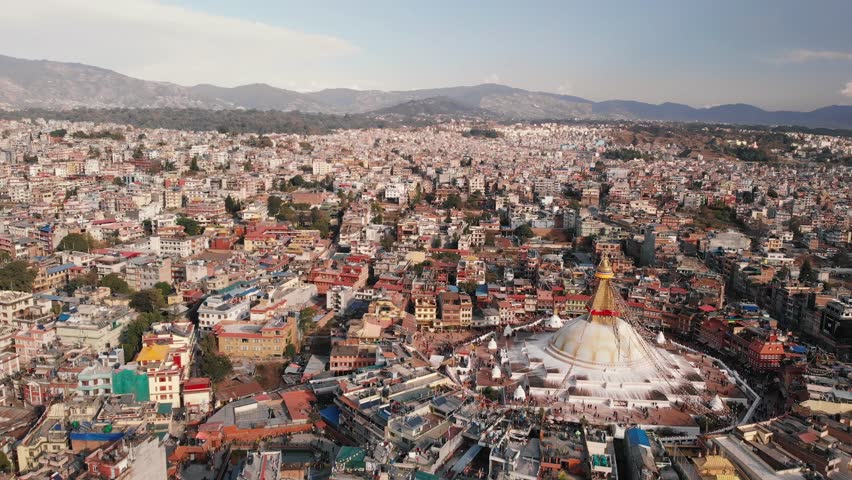
The flight into Kathmandu Valley is breathtaking, with vistas of the Himalayas and the terraced valley level. A representative will meet you at Tribhuvan International Airport and transfer you to your accommodation.
You’ll have time to tour the city after you’ve settled in (and depending on your arrival time). Kathmandu’s Durbar Square and its tiny alleyways are crowded with little stores, historic temples, and local restaurants, as well as Swayambhunath temple, where you can watch the sunset over the valley and the Himalayas to your north, are recommended places to explore on your first day.
The tourist hub of Thamel is a good place to grab your first meal, with a variety of restaurants to choose from offering both Western and local Nepali dishes. Then, if it’s not too late, head to the busiest bazaar in the city, Asan Tole, which offers an authentic display of spice, fish, and vegetable stands that make for great photo ops. Practice some basic Nepali phrases and chat with friendly locals!
Day 2: Drive from Kathmandu to Dhap, Trek to Sigane or Japre (2920 m)
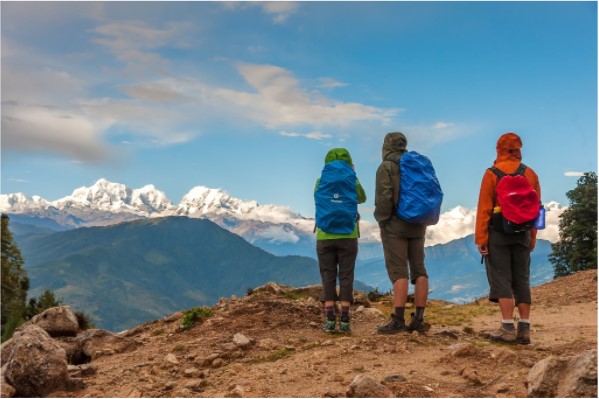
Early in the morning, you depart Kathmandu for the lengthy journey to Dhap. You’ll travel through the highlands on a Japanese-built road to the Sun Kosi river. After there, you follow the river for a long time before crossing it and ascending to Okhaldhunga. The trailhead in Dhap is roughly a 3-hour drive away. The road from Okhaldhunga to Dhap is a decent blacktop road that goes from 1560 meters to 2800 meters.
Your journey begins in Dhap. As you get closer to Sigane, you’ll notice mountains that you’ll become familiar with; they are the peaks of the Numbur Himal part of the Himalayan Range.
For the first couple of hours, the track from Sigane parallels a construction road. Japre is the name of the first village (2920m). It’s positioned over a deep valley with spectacular views of Mount Everest and the Numbur Himal. This is your first stop on the walk, as there is a monastery and a stupa here.
Time to walk: 4-5 hours
Teahouse as a place to stay
Day 3: Trek from Japre to Pikey Base Camp (3640 m)
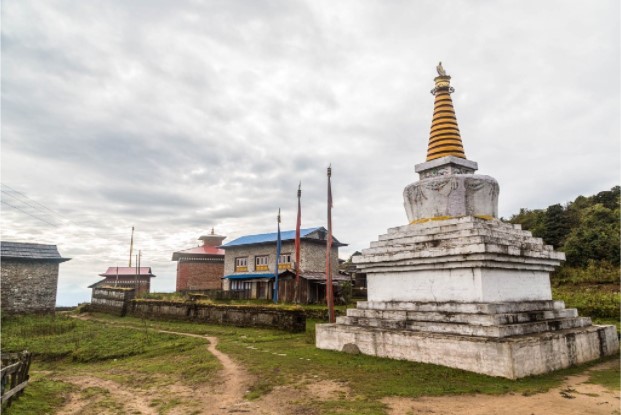
The trail ascends from Japre to Bhulbhule’s grassy ridge. There is one unnamed lodge with great views of the Everest range from here.
The trail splits shortly beyond Bhulbhule, and you turn right to Pikey Peak. You pass a lengthy Mani stonewall and some antique yak herders’ cottages. The trail then curves the hillside beneath Taklung Danda, passing through a lovely woodland track lined with rhododendrons. Pikey Peak base camp is only about 2 hours distant once you leave the forest.
At 3640 meters, there’s only one lodge with a few rooms in a separate building, but you use the dining room as our hangout. It’s a short climb to the summit at 4065 meters, but unless it’s a particularly clear evening, it’s best to climb for sunrise.
Time to hike: 6-7 hours
Teahouse as a place to stay
Day 4: Trek from Pikey Peak Base Camp to Chaulakharka (1460 m) via Pikey Peak
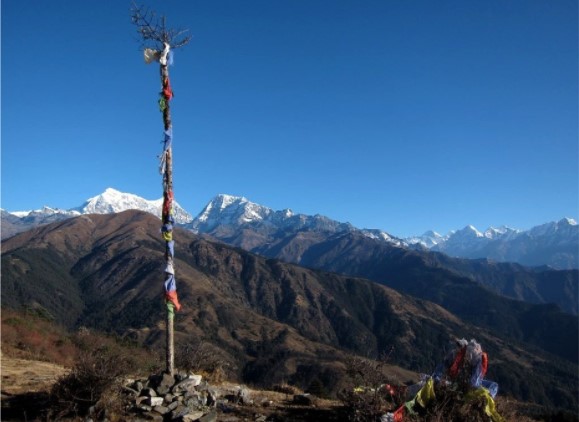
The trail to Pikey Peak’s summit begins behind the lodge and climbs a gradual slope to the summit, which is strewn with prayer flags. It’s crucial to get up early in the morning to catch the sunrise, as the views from the top are breathtaking. You will be rewarded with views from Annapurna to Kanchenjunga if the weather is clear.
It’s a quick descent back to the lodge for breakfast before heading out on the trail. After passing by a Mani wall, the trail descends to the left and follows a high contour through the trees, returning to Pikey base camp. It’s a lovely trail with breathtaking mountain views. The trail winds its way around the valley and down through a lovely forest. You’ll eventually come to a cheese factory on the left, which marks the start of Ngaur. Ngaur is a lovely cluster of houses perched on a rocky outcropping. The Gompa has been ruined as a result of the earthquake. Next to it is a small new prayer wheel structure.
The trail descends steeply through the forest to Kosinasa, which the locals now refer to as Lamane (2872m). There’s a spot for Daal Bhat here. The trail to Gumba follows the hillside, climbing to a height of 2980 meters. Gumba is a lovely hilltop village with about a dozen houses and a newish Gompa. There’s a lot of damage from the earthquake. The trail turns right at Gumba and descends steeply through the forest to Namkheli. The trail continues past the forest to the river (Likhu Kola) at 1535m and Chaulakharka, where you will spend the night.
Time to hike: 6-7 hours
Teahouse as a place to stay
Day 5: Trek from Chaulakharka to Shivalaya (1770 m)

You’ll have a 750-meter climb to Bhandar this morning. On a new tractor track, the climb can be quite steep at times. Shobha Lodge is by far the best lodge in Bhandar, and it is here that you will have a cup of tea before continuing your climb to Deurali.
At 3700 meters, the trail ascends to the Deurali pass. Great views of the valley and river back towards Pikey Peak can be found on the east side of the pass. Deurali is a small village on the west side of the mountain. Langtang is visible from this vantage point. Lunch will be served at one of the tea houses nestled among the rows of Mani Walls.
The trail descends steeply at first, then gradually levels out to Shivalaya, a large village on the river where you will spend the night unless you want to continue walking to Those or Jiri and catch the bus from there the next morning.
Time to hike: 7-8 hours
Teahouse as a place to stay
Day 6: Drive from Shivalaya to Kathmandu
Today you say your goodbyes to the mountains and return to Kathmandu by bus. The first part of this journey follows a stunning route on a Swiss-built mountain road, descending to the Tama Kosi before climbing to Charikot and then Mudu, from where it’s all downhill to the Bhote Kost, which is about 3000 meters below.
From here, take the Arniko highway from Tibet, ascending to Dhulikhel and then into the Kathmandu valley, arriving in the afternoon. In Kathmandu, we drop you off at any hotel of your choice (we can assist if needed) and then leave you to your own devices to explore the city.
Day 7: Depart Kathmandu

For the time being, Nepal must bid farewell.
Enjoy one last breakfast in a café, a city stroll, and/or souvenir shopping in Kathmandu. A representative will pick you up from your hotel and transport you to the airport for your return flight home. It’s a good idea to arrive at the airport at least two hours before your flight.
Difficulties
The Pikey Peak trek is rated as easy to moderately difficult. The path takes you through the lower Everest region. There are no steep or difficult paths along the way, but the daily walk of 5 to 6 hours makes the journey a little exhausting.
Best season to Trek
Pikey Peak Trek, like most trekking in Nepal, is best in the autumn and spring seasons, as well as the winter months due to its lower altitude. However, it is best to avoid this trek during the monsoon season because it can be very wet in this region and leech can be active.
Map
